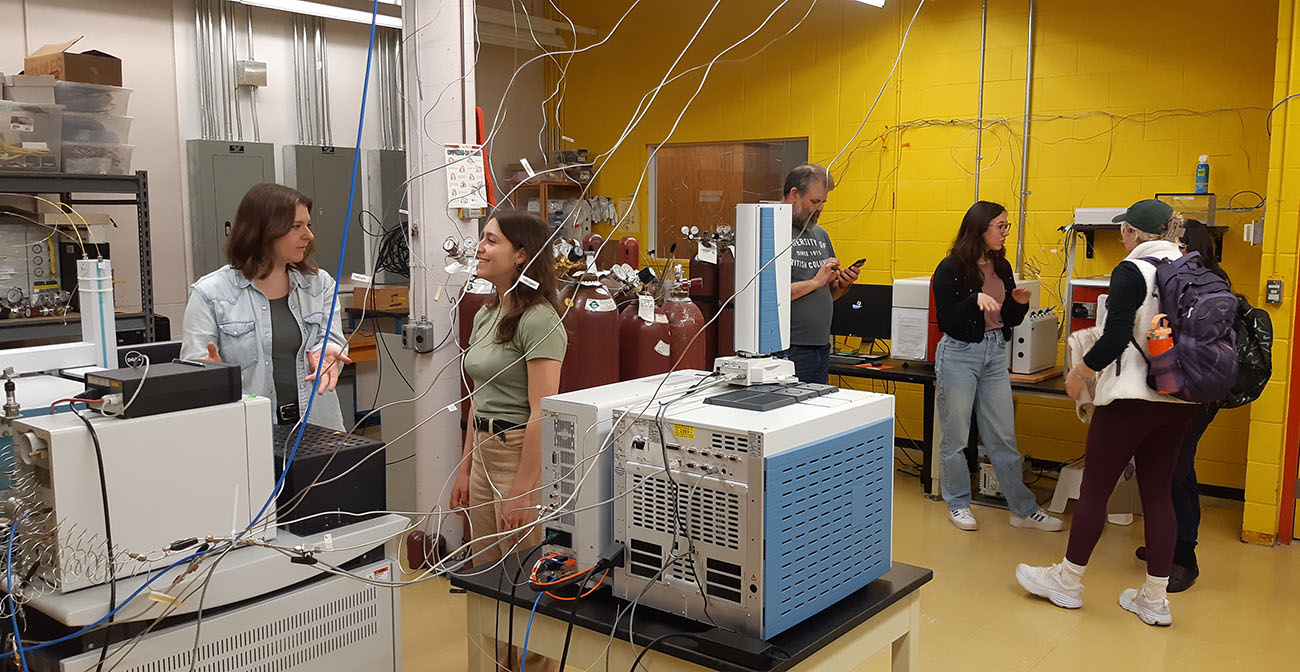
PCIGR is proud to announce the opening of its new Stable Isotope Laboratory (SIL) for the analysis of light stable isotopes: carbon, nitrogen, and oxygen. Kicking off with an open house on March 15, Assistant Professor Dr. Kendra Chritz and Ph.D. student Amelia Hurst showed off the SIL’s new hardware to visitors.
The SIL houses an Isoprime 100 isotope ratio mass spectrometer that is coupled via continuous flow to an Elementar Vario Micro Cube elemental analyzer. The system is capable of analyzing carbon and nitrogen elemental concentrations, as well as isotope ratios, in a variety of solid sample materials (e.g., soils, biological samples).
The SIL also hosts a Thermo Scientific Delta V Plus that is coupled to a GasBench and a newly purchased Isolink II gas chromatograph. The GasBench is used to derive carbon and oxygen isotope ratios from carbonates via acidification of solid samples (e.g., carbonate minerals, archaeological materials). The Isolink II allows for the separation of organic molecules by mass for the compound-specific carbon and nitrogen isotopic analysis of biological samples (e.g., amino acids). This is a powerful new tool in PCIGR’s arsenal of instrumentation.
“The new SIL provides enhanced infrastructure and capabilities to PCIGR,” Dr. Chritz said during the open house. “We now have the capability to analyze many new kinds of samples, for all-new research directions within earth and ocean sciences.”
PCIGR acknowledges and thanks the Laboratory of Archaeology at UBC’s Museum of Anthropology for adoption of these valuable instruments into our analytical family. Sincere thanks go to Elementar Americas and Isomass Scientific for installing the systems. The Isoprime and Delta V systems replace PCIGR’s well-used Thermo Scientific Delta Plus and Delta XL IRMS systems and their peripherals.
For more information about PCIGR’s new light stable isotope capabilities, please visit our IRMS page.